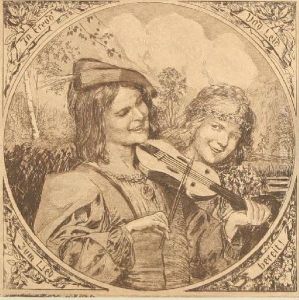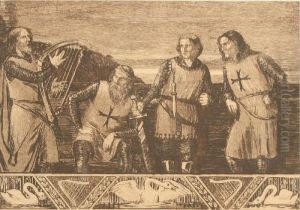Emil Krupa-Krupinsky Paintings
Emil Krupa-Krupinsky, born in 1872, was a notable figure in the realm of painting, contributing significantly to the art scene during his lifetime. Hailing from the Austro-Hungarian Empire, his work reflects a deep engagement with the cultural and artistic movements that swept through Europe at the turn of the 20th century. Krupa-Krupinsky's oeuvre is characterized by its diversity, including landscapes, portraits, and genre scenes, all imbued with a distinct sense of mood and atmosphere that captures the essence of his subjects.
Krupa-Krupinsky's artistic journey was marked by his dedication to exploring and incorporating various stylistic elements, ranging from Realism to Impressionism. His landscapes, often depicting the serene countryside of his homeland, are praised for their vibrant color palette and the ability to evoke a sense of tranquility and timelessness. Meanwhile, his portraits are notable for their psychological depth, offering a glimpse into the inner world of his subjects.
Despite his considerable talent and contribution to the art world, Emil Krupa-Krupinsky's name is not as widely recognized today as some of his contemporaries. This oversight may be attributed to the geopolitical upheavals and transformations that affected the Austro-Hungarian Empire and its successor states throughout the 20th century, which inevitably impacted the dissemination and appreciation of his work. Nonetheless, in recent years, there has been a growing interest in revisiting and re-evaluating his contributions to European art, with art historians and collectors alike seeking to uncover and celebrate the richness of his legacy.
Emil Krupa-Krupinsky's death in 1924 marked the end of a career that was as prolific as it was influential. His work continues to be studied and appreciated for its artistic merit and historical significance, offering insights into the cultural and aesthetic currents of his time. Through his paintings, Krupa-Krupinsky remains a vital part of the artistic heritage of Central Europe, his legacy enduring as a testament to the power of art to capture and convey the complex beauty of the world.

